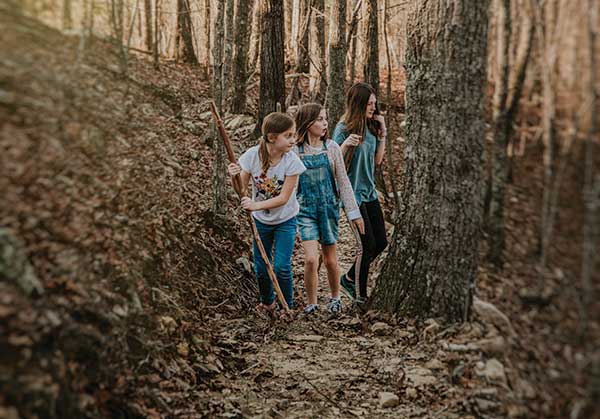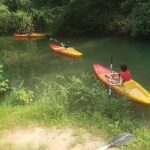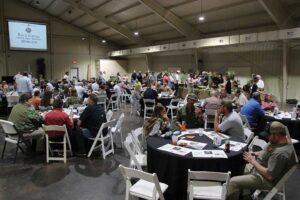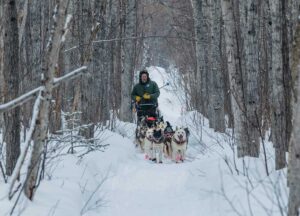
Journey begins with single step, sage advice
Story by Roxann Edsall
Submitted photos
As the weather warms up, many of us start feeling that spring fever and want to head outdoors to one of Alabama’s many beautiful hiking areas.
From the new Big Canoe Creek Preserve – whose trails open soon in Springville – to neighboring Cheaha State Park, you won’t have to go far to find those opportunities to take in the natural world outdoors. And while you don’t have to be a seasoned pro to enjoy hiking in Alabama, thru-hiker and Pell City native Bennett Fisher offers some tips for the rest of us.
After all, he was a novice once himself. He jumped in as a hiker full-speed, hitting the Appalachian Trail (AT) on his first backpacking trip after graduating from Pell City High School in 2015.
Along with his dad, who was also a novice hiker, he completed the entire 2,190 miles of the AT from Springer Mountain, Georgia, to Katahdin, Maine. Since then, Jolly, as he is known on the trail, has also thru-hiked the Pacific Coast Trail (PCT) and about half of the Continental Divide Trail (CDT). He is still recovering from the foot injury that sidelined his CDT hike.
His first piece of advice for the beginner is to prepare, but take it easy on yourself. “There’s a lot of gear to choose from. Don’t get discouraged. Form your own opinions. Do your research and take advice, but then try it and form your own opinions.”
After the father-son duo set out on their quest to conquer the AT, it wasn’t long before they were questioning their choices. On subsequent hiking trips, they explored different gear options and weeded out what didn’t work for them and added what they missed.
Local hiking gives you many more options on items you may want to bring for comfort. “If taking a camp chair helps you get outside and enjoy yourself,” says Bennett, “then take it. It’s all about what you will use to make your experience better. But don’t weigh your pack down if you don’t need it. If you don’t use it, just don’t bring it next time.”
Next, he says, evaluate the same gear in different weight options. “On one of my first hikes, I brought sandals to wear around camp that were about a pound each. What I really needed were dollar store flip flops that weighed only a few ounces.”
Good hiking shoes, he adds, are an essential piece of equipment. “A lot can go wrong with shoes.” That sentiment is echoed by Trey Staples, manager of Gadsden Outfitters. “My number one tip is to be sure you have a good sock and a good shoe. You’ve got to keep your feet dry. Get help from an outfitter who will take the time to fit you for the shoe that’s right for your feet and your activity level.”
For easy cleanups, Staples recommends bringing wet wipes, which are easy to pack. He also recommends repacking items to bring less waste with you and be sure to pack out whatever trash you do have.
Getting a backpack that fits your body is important if you’re doing more than day hiking. “Get a pack that fits you,” says Staples, “and that means going somewhere where they’ll measure your torso to get it right.” For day hiking, a small pack is useful for storing your water, food, rain gear, first aid kit and snacks.
“It’s also a good idea, no matter how long a hike you’re on,” adds Staples, “to let someone know where you’re going and when you’re expecting to be back.”
Water is a critical safety component of any hike of any duration. “If you’re on a day hike,” says Fisher, “definitely bring your own water. But for multi-day hikes, you’ll want to bring along a water filter.” Also, he says, you don’t have to buy professionally packaged backpacker food. “It’s pretty expensive, and you don’t need it.
Just bring things you like to eat and will look forward to eating. I’ve brought food before that I thought I needed that was healthy, but it just lived in my backpack because it wasn’t appealing to me, so I didn’t eat it.”
Developing a passion with each step
Fisher and his dad came back from their AT thru-hike having solidified their love of hiking. Fisher says he spent quite a bit of time hiking at Cheaha State Park before moving to Utah in 2018 and earning his degree in Outdoor Product Design from Utah State in 2020.
He has since launched his own outdoor clothing line with the tagline, “Where fun meets functional.” You can check out his products at Jollygear.com.
















